House passes gun control bill after Buffalo, Uvalde attacks

The House passed a wide-ranging gun control bill Wednesday in response to recent mass shootings in Buffalo, New York, and Uvalde, Texas, that would raise the age limit for purchasing a semi-automatic rifle and prohibit the sale of ammunition magazines with a capacity of more than 15 rounds. The legislation passed by a mostly party-line vote of 223-204. It has almost no chance of becoming law as the Senate pursues negotiations focused on improving mental health programs, bolstering school security, and enhancing background checks. But the House bill does allow Democratic lawmakers a chance to frame for voters in November where they stand on policies that polls show are widely supported. “We can’t save every life, but my God, shouldn’t we try? America, we hear you, and today in the House, we are taking the action you are demanding,” said Rep. Veronica Escobar, D-Texas. “Take note of who is with you and who is not.” The push comes after a House committee heard wrenching testimony from recent shooting victims and family members, including from 11-year-old girl Miah Cerrillo, who covered herself with a dead classmate’s blood to avoid being shot at the Uvalde elementary school. The seemingly never-ending cycle of mass shootings in the United States has rarely stirred Congress to act. But the shooting of 19 children and two teachers in Uvalde has revived efforts in a way that has lawmakers from both parties talking about the need to respond. “It’s sickening, it’s sickening that our children are forced to live in this constant fear,” said House Speaker Nancy Pelosi, D-Calif. Pelosi said the House vote would “make history by making progress.” But it’s unclear where the House measure will go after Wednesday’s vote, given that Republicans were adamant in their opposition. “The answer is not to destroy the Second Amendment, but that is exactly where the Democrats want to go,” said Rep. Jim Jordan, R-Ohio. The work to find common ground is mostly taking place in the Senate, where support from 10 Republicans will be needed to get a bill signed into law. Nearly a dozen Democratic and Republican senators met privately for an hour Wednesday in hopes of reaching a framework for compromise legislation by week’s end. Participants said more conversations were needed about a plan that is expected to propose modest steps. In a measure of the political peril that efforts to curb guns pose for Republicans, five of the six lead Senate GOP negotiators do not face reelection until 2026. They are Sens. Bill Cassidy of Louisiana, Susan Collins of Maine, John Cornyn of Texas, Lindsey Graham of South Carolina, and Thom Tillis of North Carolina. The sixth, Pat Toomey of Pennsylvania, is retiring in January. It’s also notable that none of the six is seeking the Republican presidential nomination. While Cornyn has said the talks are serious, he has not joined the chorus of Democrats saying the outlines of a deal could be reached by the end of this week. He told reporters Wednesday that he considers having an agreement before Congress begins a recess in late June to be “an aspirational goal.” The House bill stitches together a variety of proposals Democrats had introduced before the recent shootings in Buffalo and Uvalde. The suspects in the shootings at the Uvalde elementary school and Buffalo supermarket were both just 18, authorities say, when they bought the semi-automatic weapons used in the attacks. The bill would increase the minimum age to buy such weapons to 21. “A person under 21 cannot buy a Budweiser. We should not let a person under 21 buy an AR-15 weapon of war,” said Rep. Ted Lieu, D-Calif. Republicans have noted that a U.S. appeals court ruling last month found California’s ban on the sale of semi-automatic weapons to adults under 21 was unconstitutional. “This is unconstitutional, and it’s immoral. Why is it immoral? Because we’re telling 18, 19, and 20-year-olds to register for the draft. You can go die for your country. We expect you to defend us, but we’re not going to give you the tools to defend yourself and your family,” said Rep. Thomas Massie, R-Ky. The House bill also includes incentives designed to increase the use of safe gun storage devices and creates penalties for violating safe storage requirements, providing for a fine and imprisonment of up to five years if a gun is not properly stored and is subsequently used by a minor to injure or kill themselves or another individual. It also builds on the Biden administration’s executive action banning fast-action “bump-stock” devices and “ghost guns” that are assembled without serial numbers. The House is also expected to approve a bill Thursday that would allow families, police, and others to ask federal courts to order the removal of firearms from people who are believed to be at extreme risk of harming themselves or others. Nineteen states and the District of Columbia currently have such “red flag laws.” Under the House bill, a judge could issue an order to temporarily remove and store the firearms until a hearing can be held no longer than two weeks later to determine whether the firearms should be returned or kept for a specific period. Republished with the permission of The Associated Press.
Senate bid to save Roe v. Wade falls to GOP-led filibuster
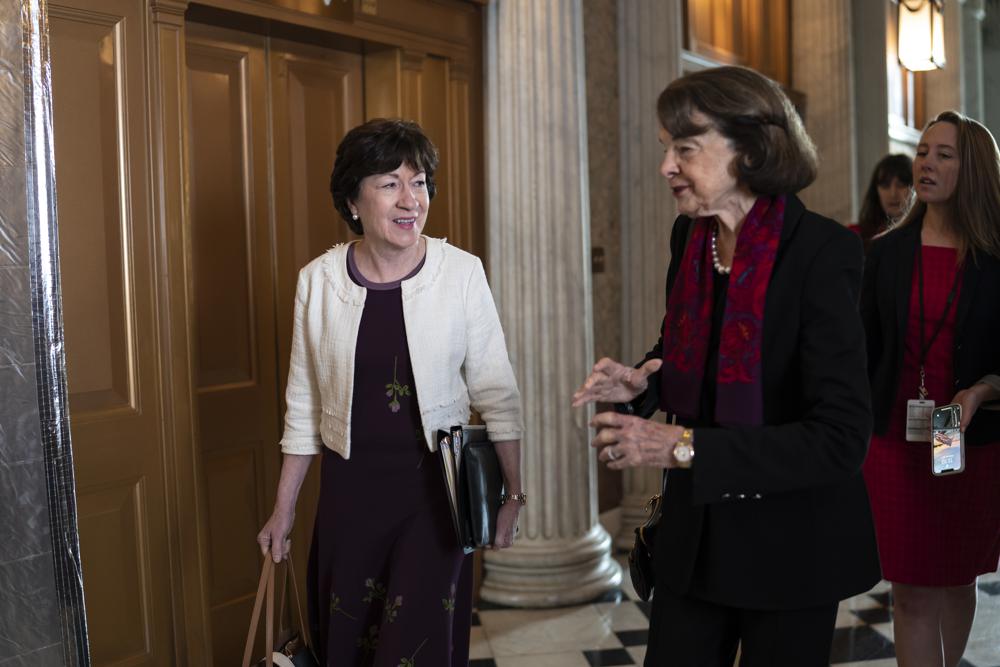
The Senate fell far short Wednesday in a rushed effort toward enshrining Roe v. Wade abortion access as federal law, blocked by a Republican filibuster in a blunt display of the nation’s partisan divide over the landmark court decision and the limits of legislative action. The almost party-line tally promises to be just the first of several efforts in Congress to preserve the nearly 50-year-old court ruling, which declares a constitutional right to abortion services but is at serious risk of being overturned this summer by a conservative Supreme Court. President Joe Biden said that Republicans “have chosen to stand in the way of Americans’ rights to make the most personal decisions about their own bodies, families, and lives.” Biden urged voters to elect more abortion-rights lawmakers in November and pledged in the meantime to explore other ways to secure the rights established in Roe. For now, his party’s slim majority proved unable to overcome the filibuster led by Republicans, who have been working for decades to install conservative Supreme Court justices and end Roe v. Wade. The vote was 51-49 against proceeding, with 60 votes needed to move ahead. Congress has battled for years over abortion policy, but the Wednesday vote to take up a House-passed bill was given new urgency after the disclosure of a draft Supreme Court opinion to overturn the Roe decision that many had believed to be settled law. The outcome of the conservative-majority court’s actual ruling, expected this summer, is sure to reverberate around the country and on the campaign trail ahead of the fall midterm elections that will determine which party controls Congress. Security was tight at the Capitol where Vice President Kamala Harris presided, and it has been bolstered across the street at the Supreme Court after protesters turned out in force last week following the leaked draft. Scores of House Democratic lawmakers marched protest-style to the Senate and briefly watched from the visitor galleries. Harris can provide a tie-breaking vote in the 50-50 split Senate, but that was beside the point on Wednesday. One conservative Democrat, Joe Manchin of West Virginia, voted with the Republicans, saying he supported keeping Roe v. Wade but believed the current bill was too broad. “The Senate is not where the majority of Americans are on this issue,” Harris said afterward. Over several days, Democratic senators delivered speeches contending that undoing abortion access would mean great harm, not only for women but for all Americans planning families and futures. Sen. Catherine Cortez Masto, D-Nev., said that most American women have only known a world where abortion access was guaranteed but could face a future with fewer rights than their mothers or grandmothers. “That means women will not have the same control over their lives and bodies as men do, and that’s wrong,” she said in the run-up to Wednesday’s vote. Few Republican senators spoke in favor of ending abortion access, but they embraced the filibuster to block the bill from advancing. Senate Republican leader Mitch McConnell, an architect of the effort to install conservative justices on the Supreme Court — including three during the Trump era — has sought to downplay the outcome of any potential changes in federal abortion policy. “This issue will be dealt with at the state level,” McConnell said. Some other Republicans, including Sen. John Thune of South Dakota, argue that the House-passed bill is more extreme than Roe and would expand abortion access beyond what is already the law. About half the states already have approved laws that would further restrict or ban abortions, including some trigger laws that would take effect once the court rules. Polls show that most Americans want to preserve access to abortion in the earlier stages of pregnancy, but views are more nuanced and mixed when it comes to late-term abortions. The draft court ruling on a case from Mississippi suggested the majority of conservative justices are prepared to end the federal right to abortion, leaving it to the states to decide. Whatever the Supreme Court says this summer, it will almost guarantee a new phase of political fighting in Congress over abortion policy, filibuster rules, and the most basic rights to health care, privacy, and protecting the unborn. In recent years, abortion debates have come to a political draw in Congress. Bills would come up for votes — to expand or limit services — only to fail along party lines or be stripped out of broader legislative packages. In the House, where Democrats have the majority, lawmakers approved the abortion-rights Women’s Health Protection Act last year on a largely party-line vote after the Supreme Court first signaled it was considering the issue by allowing a Texas law’s ban to take effect. But the bill has languished in the Senate, evenly split with bare Democratic control because of Harris’ ability to cast a tie-breaking vote. Wednesday’s failure renewed calls to change Senate rules to do away with the high-bar filibuster threshold, at least on this issue. The two Republican senators who support abortion access — Lisa Murkowski of Alaska, who faces her own reelection in November, and Susan Collins of Maine — were also no votes, having proposed their own more tailored approach to counter the Supreme Court’s potential action. Both of the Republican senators, who voted to confirm most of former President Donald Trump’s justices, are in talks over alternatives. But Democrats have largely panned the Collins-Murkowski effort as insufficient. “I plan to continue working with my colleagues on legislation to maintain – not expand or restrict – the current legal framework for abortion rights in this country,” Collins said in a statement. Pressure is building on those two senators to join most Democrats in changing the filibuster rules, but that appears unlikely. Five years ago, it was McConnell who changed Senate rules to selectively do away with the filibuster to confirm Trump’s justices after blocking Barack Obama’s choice of Merrick Garland to fill a Supreme Court vacancy at the start of the 2016 presidential campaign, leaving the seat open for Trump to fill after he won
Nancy Pelosi positive for COVID-19, was at White House with Joe Biden

House Speaker Nancy Pelosi has tested positive for COVID-19, a day after appearing unmasked at a White House event with President Joe Biden. Pelosi, D-Calif., received a positive test result for COVID-19 and is currently asymptomatic, her spokesman Drew Hammill said Thursday in a tweet. He said she had tested negative earlier in the week. “The Speaker is fully vaccinated and boosted and is thankful for the robust protection the vaccine has provided,” Hammill said. Pelosi, he said, will “quarantine consistent with CDC guidance, and encourages everyone to get vaccinated, boosted and test regularly.” The White House said Biden and Pelosi had only “brief interactions over the course of the last two days” and that the President was not considered a close contact of the speaker by CDC guidance — sustained unmasked contact within 6 feet for more than 15 minutes over a 24-hour period. “Last night, as a part of his regular testing cadence, the President tested negative,” the White House said in a statement. “He will continue to be tested regularly. The President wishes Speaker Pelosi a speedy recovery.” The 82-year-old Democratic leader’s announcement came ahead of her weekly press appearance on Capitol Hill, which was abruptly called off. The House is set to start a two-week spring recess. Pelosi also postponed a planned congressional delegation trip to Asia she was scheduled to lead. Washington has experienced a rush of new COVID-19 cases as restrictions have lifted and more events and gatherings are happening across Washington, D.C. On Wednesday, Attorney General Merrick Garland and Commerce Secretary Gina Raimondo announced positive tests. The officials were among more than a dozen attendees of the Saturday night Gridiron Club dinner to test positive for the virus. Pelosi did not attend the dinner, her spokesman said. Washington D.C. Mayor Muriel Bowser also announced Thursday that she tested positive for COVID-19 and would “work at home while following isolation protocols.” Several lawmakers have announced positive test results and are isolating, including Sen. Susan Collins, R-Maine. Collins’ office announced she had tested positive late Thursday, shortly after the Senate voted to confirm Supreme Court nominee Judge Ketanji Brown Jackson. The CDC says people vaccinated and boosted against COVID-19 are much less likely to suffer adverse outcomes, including serious illness and death, from the virus compared to those who are unvaccinated. White House press secretary Jen Psaki has faced a flurry of questions in recent days about the COVID-19 protocols surrounding Biden, as more members of the administration and others in Washington have tested positive for the coronavirus. Psaki said Biden planned to continue with his public schedule despite the uptick in cases, including hosting large events, such as one on Friday celebrating Jackson’s confirmation to the Supreme Court. “The most important message we’re sending to the public is that we have steps in place that we can take to continue to address it, and even as we’re continuing to fight COVID, we can, for the most part, return to our normal routines,” she said Thursday. Asked whether there was a concern that the Friday event could be a “super-spreader” for the virus, like President Donald Trump’s Rose Garden ceremony announcing the nomination of now-Justice Amy Coney Barrett, Psaki emphasized that the risks from the virus are now much lower now because of vaccinations and treatments. “At that point in time, vaccines were unavailable; people were not vaccinated; it certainly puts us in a different space,” Psaki said. Biden has not been identified as a close contact by the White House Medical Unit, despite being photographed hugging and kissing Pelosi, because they did not spend more than 15 minutes in close proximity over a 24 period — the CDC’s standard. Psaki said if he was ever identified as a close contact, Biden would follow the CDC’s guidance, including wearing a mask when around other people. “If he is in close contact, that is exactly what he will do,” she told reporters. Psaki also defended Vice President Kamala Harris’ decision not to wear a mask in the Senate chamber while presiding over the Jackson vote, despite being identified as a close contact of a staff member who tested positive for COVID-19. CDC guidance recommends close-contacts who are fully vaccinated wear a tight-fitting mask when around other people. “I know that she was alone kind of on the dais for most of that, but of course, she’s been wearing a mask otherwise,” said Psaki. Republished with the permission of the Associated Press.
Ketanji Brown Jackson confirmed as first Black female high court justice
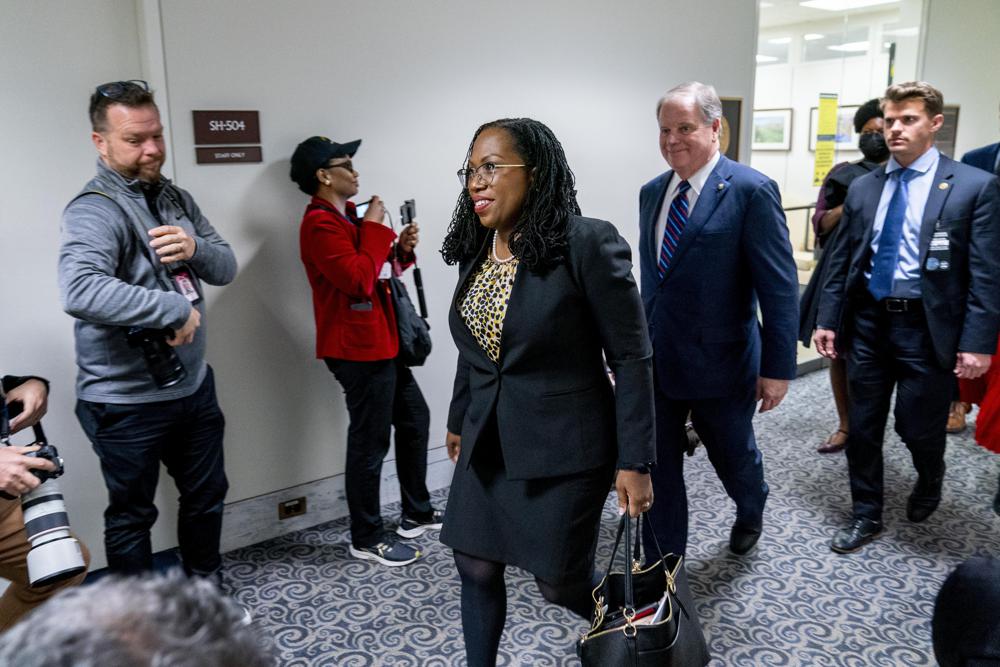
The Senate confirmed Ketanji Brown Jackson to the Supreme Court on Thursday, shattering a historic barrier by securing her place as the first Black female justice and giving President Joe Biden a bipartisan endorsement for his promised effort to diversify the high court. Cheers rang out in the Senate chamber as Jackson, a 51-year-old appeals court judge with nine years of experience on the federal bench, was confirmed 53-47, mostly along party lines but with three Republican votes. Presiding over the vote was Vice President Kamala Harris, also the first Black woman to reach her high office. Biden tweeted afterward that “we’ve taken another step toward making our highest court reflect the diversity of America.” Senate Majority Leader Chuck Schumer exulted that it was “a wonderful day, a joyous day, an inspiring day — for the Senate, for the Supreme Court, and for the United States of America.” Harris said as she left the Capitol that she was “overjoyed, deeply moved.” Jackson will take her seat when Justice Stephen Breyer retires this summer, solidifying the liberal wing of the 6-3 conservative-dominated court. She joined Biden at the White House to watch the vote, embracing as it came in. The two were expected to speak, along with Harris, at the White House Friday. During four days of Senate hearings last month, Jackson spoke of her parents’ struggles through racial segregation and said her “path was clearer” than theirs as a Black American after the enactment of civil rights laws. She attended Harvard University, served as a public defender, worked at a private law firm, and was appointed as a member of the U.S. Sentencing Commission. She told senators she would apply the law “without fear or favor,” and pushed back on Republican attempts to portray her as too lenient on criminals she had sentenced. Jackson will be just the third Black justice, after Thurgood Marshall and Clarence Thomas, and the sixth woman. She will join three other women, Sonia Sotomayor, Elena Kagan, and Amy Coney Barrett – meaning that four of the nine justices will be women for the first time in history. Her eventual elevation to the court will be a respite for Democrats who fought three bruising battles over former President Donald Trump’s nominees and watched Republicans cement a conservative majority in the final days of Trump’s term with Barrett’s confirmation. While Jackson won’t change the balance, she will secure a legacy on the court for Biden and fulfill his 2020 campaign pledge to nominate the first Black female justice. “This is a tremendously historic day in the White House and in the country,” said White House press secretary Jen Psaki after the vote. “And this is a fulfillment of a promise the president made to the country.” The atmosphere was joyful, though the Senate was divided, as Thursday’s votes were cast. Senators of both parties sat at their desks and stood to vote, a tradition reserved for the most important matters. The upper galleries were almost full for the first time since the beginning of the pandemic two years ago, and about a dozen House members, part of the Congressional Black Caucus, stood at the back of the chamber. Harris called out the tally, pausing with emotion, and Democrats erupted in loud applause and cheers, Schumer pumping his fists. A handful of Republicans stayed and clapped, but most by then had left. Despite Republican criticism of her record, Jackson eventually won three GOP votes. The final tally was far from the overwhelming bipartisan confirmations for Breyer and other justices in decades past, but it was still a significant accomplishment for Biden in the 50-50 split Senate after GOP senators aggressively worked to paint Jackson as too liberal and soft on crime. Statements from Republican Sens. Susan Collins of Maine, Lisa Murkowski of Alaska, and Mitt Romney of Utah all said the same thing — they might not always agree with Jackson, but they found her to be enormously well qualified for the job. Collins and Murkowski both decried increasingly partisan confirmation fights, which only worsened during the battles over Trump’s three picks. Collins said the process was “broken,” and Murkowski called it “corrosive” and “more detached from reality by the year.” Biden, a veteran of a more bipartisan Senate, said from the day of Breyer’s retirement announcement in January that he wanted support from both parties for his history-making nominee, and he invited Republicans to the White House as he made his decision. It was an attempted reset from Trump’s presidency, when Democrats vociferously opposed the three nominees, and from the end of President Barack Obama’s when Republicans blocked nominee Merrick Garland from getting a vote. Once sworn in, Jackson will be the second-youngest member of the court after Barrett, 50. She will join a court on which no one is yet 75, the first time that has happened in nearly 30 years. Jackson’s first term will be marked by cases involving race, both in college admissions and voting rights. She has pledged to sit out the court’s consideration of Harvard’s admissions program since she is a member of its board of overseers. But the court could split off a second case involving a challenge to the University of North Carolina’s admissions process, which might allow her to weigh in on the issue. Judith Browne Dianis, executive director of the Advancement Project, a civil rights organization, said Jackson will make the court more reflective of communities that are most impacted by the judiciary. “The highest court in the land now will have a firsthand perspective of how the law impacts communities of color — via voting rights, police misconduct, abortion access, housing discrimination, or the criminal legal system, among other issues,” she said. “This will ultimately benefit all Americans.” Jackson could wait as long as three months to be sworn in, as the court’s session generally ends in late June or early July. She remains a judge on the federal appeals court in Washington, but she stepped away from cases there when she was nominated in February. Republicans spent
Terri Sewell only Alabama lawmaker to vote yes to Democrat led $35-a-month insulin cap bill
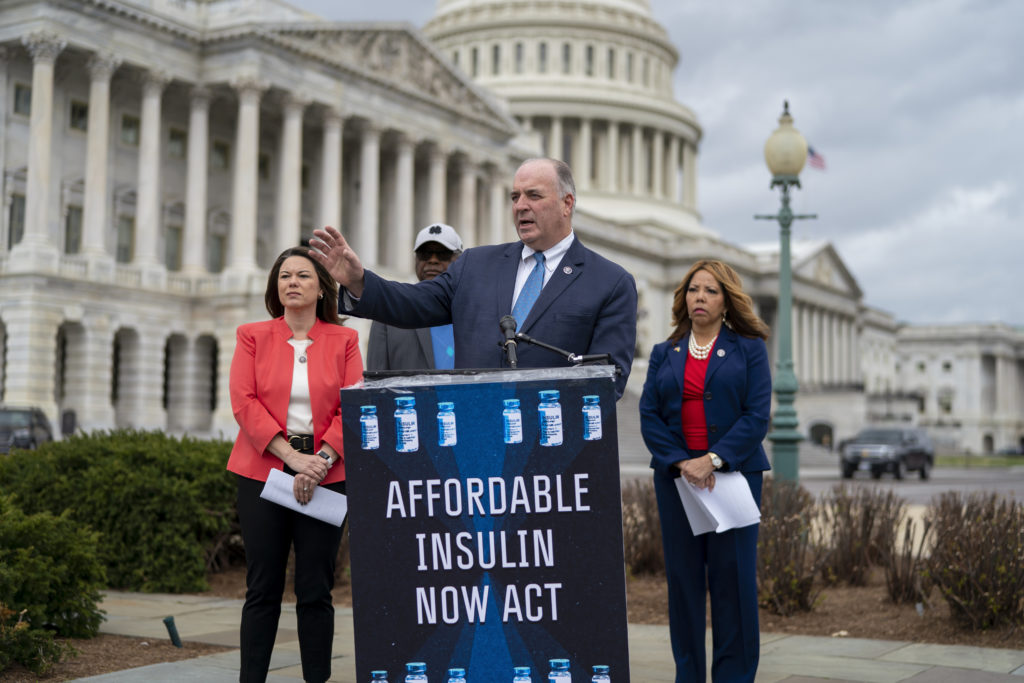
The House on Thursday passed a bill capping the monthly cost of insulin at $35 for insured patients, part of an election-year push by Democrats for price curbs on prescription drugs at a time of rising inflation. Rep. Terri Sewell was the only yea for the bill while the rest of the Alabama legislature voted nay. Experts say the legislation, which passed 232-193, would provide significant relief for privately insured patients with skimpier plans and for Medicare enrollees facing rising out-of-pocket costs for their insulin. Some could save hundreds of dollars annually, and all insured patients would get the benefit of predictable monthly costs for insulin. The bill would not help the uninsured. But the Affordable Insulin Now Act will serve as a political vehicle to rally Democrats and force Republicans who oppose it into uncomfortable votes ahead of the midterms. For the legislation to pass Congress, 10 Republican senators would have to vote in favor. Democrats acknowledge they don’t have an answer for how that’s going to happen. “If 10 Republicans stand between the American people being able to get access to affordable insulin, that’s a good question for 10 Republicans to answer,” said Rep. Dan Kildee, D-Mich., a cosponsor of the House bill. “Republicans get diabetes, too. Republicans die from diabetes.” Public opinion polls have consistently shown support across party lines for congressional action to limit drug costs. But Rep. Cathy McMorris Rodgers, R-Wash., complained the legislation is only “a small piece of a larger package around government price controls for prescription drugs.” Critics say the bill would raise premiums and fails to target pharmaceutical middlemen seen as contributing to high list prices for insulin. Sen. Chuck Grassley, R-Iowa, said Democrats could have a deal on prescription drugs if they drop their bid to authorize Medicare to negotiate prices. “Do Democrats really want to help seniors, or would they rather have the campaign issue?” Grassley said. The insulin bill, which would take effect in 2023, represents just one provision of a much broader prescription drug package in President Joe Biden’s social and climate legislation. In addition to a similar $35 cap on insulin, the Biden bill would authorize Medicare to negotiate prices for a range of drugs, including insulin. It would penalize drugmakers who raise prices faster than inflation and overhaul the Medicare prescription drug benefit to limit out-of-pocket costs for enrollees. Biden’s agenda passed the House only to stall in the Senate because Democrats could not reach consensus. Party leaders haven’t abandoned hope of getting the legislation moving again and preserving its drug pricing curbs largely intact. The idea of a $35 monthly cost cap for insulin actually has a bipartisan pedigree. The Trump administration had created a voluntary option for Medicare enrollees to get insulin for $35, and the Biden administration continued it. In the Senate, Republican Susan Collins of Maine and Democrat Jeanne Shaheen of New Hampshire are working on a bipartisan insulin bill. Georgia Democratic Sen. Raphael Warnock has introduced legislation similar to the House bill, with the support of Sen. Majority Leader Chuck Schumer of New York. Stung by criticism that Biden’s economic policies spur inflation, Democrats are redoubling efforts to show how they’d help people cope with costs. On Thursday, the Commerce Department reported a key inflation gauge jumped 6.4% in February compared with a year ago, the largest year-over-year rise since January 1982. But experts say the House bill would not help uninsured people, who face the highest out-of-pocket costs for insulin. Also, people with diabetes often take other medications as well as insulin. That’s done to treat the diabetes itself, along with other serious health conditions often associated with the disease. The House legislation would not help with those costs, either. Collins says she’s looking for a way to help uninsured people through her bill. About 37 million Americans have diabetes, and an estimated 6 million to 7 million use insulin to keep their blood sugars under control. It’s an old drug, refined and improved over the years, that has seen relentless price increases. Steep list prices don’t reflect the rates insurance plans negotiate with manufacturers. But those list prices are used to calculate cost-sharing amounts that patients owe. Patients who can’t afford their insulin reduce or skip doses, a strategy born of desperation, which can lead to serious complications and even death. Economist Sherry Glied of New York University said the market for insulin is a “total disaster” for many patients, particularly those with skimpy insurance plans or no insurance. “This will make private insurance for people with diabetes a much more attractive proposition,” said Glied. Republished with the permission of the Associated Press.
Steve Flowers: 2022 Senate race will be most expensive in state history

The marquee race in this big 2022 election year is for our open U.S. Senate seat. It is beginning to percolate. The race has been raging for over a year already, and we are getting poised to begin the final full-court press to the finish line. The GOP Primary is three months away on May 24, with a monumental runoff on June 21. The winner on that day will be Richard Shelby’s successor. Early on, it appeared to be a two-person race between Mo Brooks and Katie Britt. However, Mike Durant has surged out of the blue with a three solid month media bombardment and made it a three-way race. All three candidates appear to be well-financed and ready for a three-month battle to the finish line. It will be the most expensive race in Alabama political history. There are barrels of money flowing into the Heart of Dixie, primarily out of the Potamic basin in Washington. In this modern-day of national politics, a candidate’s individual war chest is not the all-telling story. We live in a world of third-party political action committees (PACs). These third-party PACs, based out of Washington, will more than likely spend more on their preferred candidate than will be spent by the candidates’ direct campaigns. The candidates’ individual campaign account dollars will go towards positive ads for their candidate. The third-party PAC ads will be negative. These outside PACs are not supposed to work in conjunction or even correspond with their preferred candidate, but they do in actuality. They share polling and media strategy. These innocuous PACs have the meanest negative media gurus in America. These hired guns relish attacking and destroying their opposition. Therefore, look for the next three months to be a barrage of negative ads against Mo brooks, Katie Britt and Mike Durant. It will be easy to find and exploit negative ammunition on Mo Brooks. He has been in politics for 40 years. Katie Britt and Mike Durant will be harder to ambush as they are making their first races. It will be telling to see how Durant and Britt react to negative attacks. Mo Brooks is backed by the Club for Growth. He has been their boy for the last ten years. He fits in with them ideologically. The Club for Growth is an ultra-right-wing fringe group that funds right-wing antigovernmental free trade candidates mostly in smaller conservative states where their money will go further. They supposedly promised Brooks $5 million of soft third-party money to commit to the race. That money is there, and they are spending it. However, a deep dive into the polling shows Brooks sinking. The wild card in the race is one POW hero, Mike Durant. He has a really good story to tell, and he is telling that story with a well-done media buy. He makes no pretense towards campaigning or meeting Alabamians. He probably could not tell you where Conecuh or Bullock County are, much less Samson or Slocomb. He is from New Hampshire and moved to Huntsville to build an aerospace company. Durant is being assisted by a third-party PAC known as the Patriot PAC. This group’s primary donors are very anti-Trump. The primary contributor to this PAC is a wealthy donor named Harriman. His mission is to elect five independent senators who will be swing votes and not align or have allegiance to any party. Harriman scoured the nation to find the perfect military hero to win a Republican seat. He garnered the perfect candidate in Durant, who is coming around the corner like nobody’s business. Durant would be likely to align with moderate Republicans like Mitt Romney and Susan Collins. In Washington, they are referring to Durant as a RINO in uniform. Therefore, if you really look into the three GOP candidates, you see a semblance of national Republican circles vying for a candidate of their persuasion to fill a guaranteed Republican seat. Brooks would be the Club for Growth, right-wing, fringe candidate that adheres to pro-China trade policies and has no concern for Alabama jobs or federal projects vital to our state. Durant is backed by the Harriman PAC. Katie Britt is the mainstream, conservative, pro-business candidate who understands Alabama and her needs. In fact, she is the only real Alabamian in the race. It will be an interesting and expensive three-month show. It will be fun to watch. I will keep you posted. Steve Flowers is Alabama’s leading political columnist. His weekly column appears in over 60 Alabama newspapers. Steve served 16 years in the state legislature. Steve may be reached: www.steveflowers.us.
Steve Flowers: Groundhog Day

Happy Groundhog Day. It is an ironic juxtaposition that the State of the Union address by the president and Groundhog Day occur on the same day. One involves a meaningless ritual in which a doddering octogenarian who is as outdated as the State of the Union event stumbles through some scripted predictions. The other involves an outdated mythical tradition celebrating a prediction by a rodent. Both prognostications by Biden and the Groundhog are insignificant and irrelevant. Our marquee race for 2022 in the State of Alabama is the race to replace our retiring U.S. Senator, Richard Shelby. Before I delve into the rivalry to follow Shelby and sit in his seat, allow me to say that his junior counterpart in our current Senate tandem, Coach Tommy Tuberville, is doing a good job after his first year as our junior U. S. Senator. There was some speculation regarding his effectiveness, given his lack of governmental experience. Tuberville has put together an excellent staff. He did a good day’s work when he secured Stephen Boyd as his Chief of Staff. Tuberville and his staff are doing an excellent job with constituent service, which is an integral part of a senator’s job when you want to be an effective senator for your state. Tuberville’s staff is especially interested in helping veterans in Alabama. He has a full-time staff member who is assigned to helping Alabama veterans get their deserved benefits for their service to our country. You could tell Tuberville was driven to making sure that military veterans and current servicemen and women were taken care of when he was running. His father was a career military man, and Tuberville revered him. Coach Tuberville has not sought the spotlight and tried to become a Fox News darling and be a right wing ideologue. He has taken on a workhorse mentality and has voted consistently conservative and been a team player within the GOP Senate caucus. Tuberville realizes that he will never be a Richard Shelby because he got there later in life after his career as a college football coach. He has learned that seniority counts. Arriving in the U. S. Senate at age 66 is not conducive to being a senate giant. Seniority is king in Washington. Tuberville also understands the importance that defense spending and agriculture are to Alabama. He is applying himself to protecting these two vital concerns as any senator from Alabama should strive to accomplish. It is all about seniority in the U.S. Senate. It will be at least 15 years before anybody we elect to this senate seat has any real power to bring home the bacon. Katie Britt is 40, and Mo Brooks is 68. You can do the math as to which one has the potential to be effective for Alabama and build seniority and power. Katie Britt not only has the youthfulness to gain seniority, but she also possesses the ability, acumen, and more importantly, she wants to be an effective senator for Alabama and protect our military bases and jobs. Mo Brooks has shown over his 40-year political career and, more recently, his 10-year congressional tenure that he does not want to be effective for Alabama. He is more interested in bomb throwing than doing anything for his district or Alabama. Brooks could not be effective, even if he wanted to. He will be 69, and the Republican leadership would dismiss him as a rightwing gadfly and an old one at that. The wildcard in the Senate race is one Mike Durant. He came out of the blue three months ago and has bombarded the airwaves with a constant saturation of television ads. He has run a total media campaign with no one-on-one campaigning. Few people have ever met him. He is like a stealth candidate who only appears on your television as a POW war hero. Durant, who hails from New Hampshire, is primarily self-funding his campaign. However, he is also being financed by a PAC headed by a wealthy donor Harriman, who wants to elect five independent non-partisan senators in the mold of Mitt Romney of Utah and Susan Collins of Maine, which would put Durant in a small group of liberal Democrats and Republicans. Durant may also be torpedoed by a family situation that has come to light recently. The U.S. Senate race is fluid at this time, with most people undecided on their choice. It will be interesting to watch. See you next week. Steve Flowers is Alabama’s leading political columnist. His weekly column appears in over 60 Alabama newspapers. He served 16 years in the state legislature. Steve may be reached at www.steveflowers.us.
Richard Shelby praises Patrick Leahy upon his retirement announcement
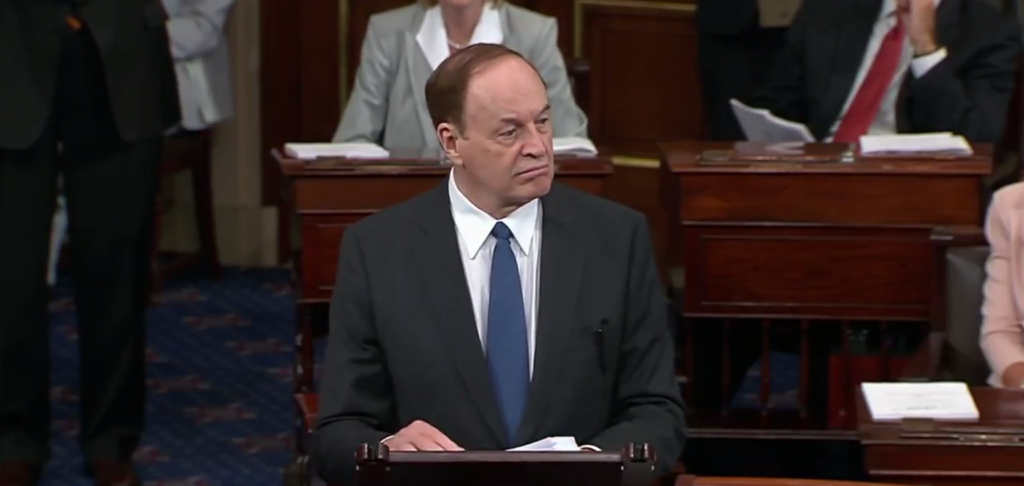
Vermont Sen. Patrick Leahy has announced that he won’t seek reelection to a ninth term in Congress, becoming the first Senate Democrat to announce his retirement, AL.com reported. Leahy is the most senior senator in the chamber and serves as president pro tempore. He is also chairman of the Appropriations Committee. “It’s time to put down the gavel,” Leahy said. “It is time to pass the torch to the next Vermonter who will carry on this work of our great state. It’s time to come home.” Senator Richard Shelby, vice chairman of the Senate Committee on Appropriations, announced his retirement months ago. Leahy’s retirement means two ranking members will leave Congress at the same time, ushering in the first time women will likely lead the panel; it’s expected that Maine’s Susan Collins and Washington state’s Patty Murray will take over the two positions. Shelby praised Leahy and his legacy, stating, “Over the past 47 years, Chairman Leahy has had a remarkable career in the Senate. As chairman of the Appropriations, Judiciary, and Agriculture committees and president pro tempore of the Senate, Pat has served Vermont well and with honor. His devotion to our nation and his state merits praise. I thank Pat for his friendship and wish he and his wife, Marcelle, all the best.”
Big win for $1T infrastructure bill: Dems, GOP come together
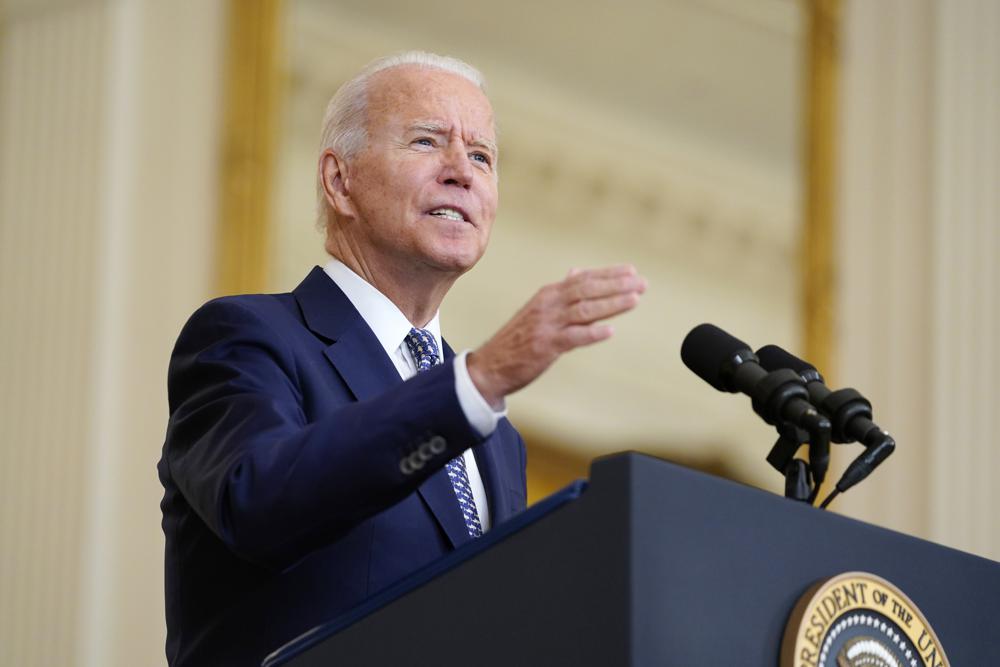
With a robust vote after weeks of fits and starts, the Senate approved a $1 trillion infrastructure plan for states coast to coast on Tuesday, as a rare coalition of Democrats and Republicans joined together to overcome skeptics and deliver a cornerstone of President Joe Biden’s agenda. “Today, we proved that democracy can still work,” Biden declared at the White House, noting that the 69-30 vote included even Senate Republican leader Mitch McConnell. “We can still come together to do big things, important things, for the American people,” Biden said. The overwhelming tally provided fresh momentum for the first phase of Biden’s “Build Back Better” priorities, now heading to the House. A sizable number of lawmakers showed they were willing to set aside partisan pressures, at least for a moment, eager to send billions to their states for rebuilding roads, broadband internet, water pipes, and the public works systems that underpin much of American life. The vote also set the stage for a much more contentious fight over Biden’s bigger $3.5 trillion package that is next up in the Senate — a more liberal undertaking of child care, elder care, and other programs that is much more partisan and expected to draw only Democratic support. That debate is expected to extend into the fall. With the Republicans lockstep against the next big package, many of them reached for the current compromise with the White House because they, too, wanted to show they could deliver and the government could function. “Today’s kind of a good news, bad news day,” said Alaska Sen. Lisa Murkowski of Alaska, one of the negotiators. “The good news is that today we really did something historic in the United States Senate; we moved out an infrastructure package, something that we have talked about doing for years.” The bad news, she said, is what’s coming next. Infrastructure was once a mainstay of lawmaking, but the weeks-long slog to strike a compromise showed how hard it has become for Congress to tackle routine legislating, even on shared priorities. Tuesday’s Infrastructure Investment and Jobs Act started with a group of 10 senators who seized on Biden’s campaign promise to draft a scaled-down version of his initial $2.3 trillion proposal, one that could more broadly appeal to both parties in the narrowly divided Congress, especially the 50-50 Senate. It swelled to a 2,700-page bill backed by the president and also business, labor, and farm interests. Over time, it drew an expansive alliance of senators and a bipartisan group in the House. In all, 19 Republicans joined all Democrats in voting for Senate passage. Vice President Kamala Harris, as presiding officer, announced the final tally. While liberal lawmakers said the package doesn’t go far enough as a down-payment on Biden’s priorities and conservatives said it is too costly and should be more fully paid for, the coalition of centrist senators was able to hold. Even broadsides from former President Donald Trump could not bring the bill down. The measure proposes nearly $550 billion in new spending over five years in addition to current federal authorizations for public works that will reach virtually every corner of the country — a potentially historic expenditure Biden has put on par with the building of the transcontinental railroad and Interstate highway system. There’s money to rebuild roads and bridges and also to shore up coastlines against climate change, protect public utility systems from cyberattacks and modernize the electric grid. Public transit gets a boost, as do airports and freight rail. Most lead drinking water pipes in America could be replaced. Sen. Rob Portman of Ohio, the lead Republican negotiator, said the work “demonstrates to the American people that we can get our act together on a bipartisan basis to get something done.” The top Democratic negotiator, Sen. Kyrsten Sinema, said rarely will a piece of legislation affect so many Americans. She gave a nod to the late fellow Arizona Sen. John McCain and said she was trying to follow his example to “reach bipartisan agreements that try to bring the country together.” Drafted during the COVID-19 crisis, the bill would provide $65 billion for broadband, a provision Sen. Susan Collins, R-Maine, negotiated because she said the coronavirus pandemic showed that such service “is no longer a luxury; it is a necessity.” States will receive money to expand broadband and make it more affordable. Despite the momentum, action slowed last weekend when Sen. Bill Hagerty, a Tennessee Republican allied with Trump, refused to speed up the process. Trump had called his one-time Japan ambassador and cheered him on, but it’s unclear if the former president’s views still carry as much sway with most senators. Trump issued fresh complaints hours before Tuesday’s vote. He had tried and failed to pass his own infrastructure bill during his time in the White House. Other Republican senators objected to the size, scope, and financing of the package, particularly concerned after the Congressional Budget Office said it would add $256 billion to deficits over the decade. Rather than pressure his colleagues, Senate Republican leader McConnell of Kentucky stayed behind the scenes for much of the bipartisan work. He allowed the voting to proceed and may benefit from enabling this package in a stroke of bipartisanship while trying to stop Biden’s next big effort. Unlike the $3.5 trillion second package, which would be paid for by higher tax rates for corporations and the wealthy, the bipartisan measure is to be funded by repurposing other money, including some COVID-19 aid. The bill’s backers argue that the budget office’s analysis was unable to take into account certain revenue streams that will help offset its costs — including from future economic growth. Senators have spent the past week processing nearly two dozen amendments, but none substantially changed the framework. The House is expected to consider both Biden infrastructure packages together, but centrist lawmakers urged Speaker Nancy Pelosi to bring the bipartisan plan forward quickly, and they raised concerns about the bigger bill in a sign of the complicated politics still ahead. After the Senate vote, she declared, “Today is a day of progress … a once in a century opportunity.”
Still waiting, Senate grinds away on $1T infrastructure bill
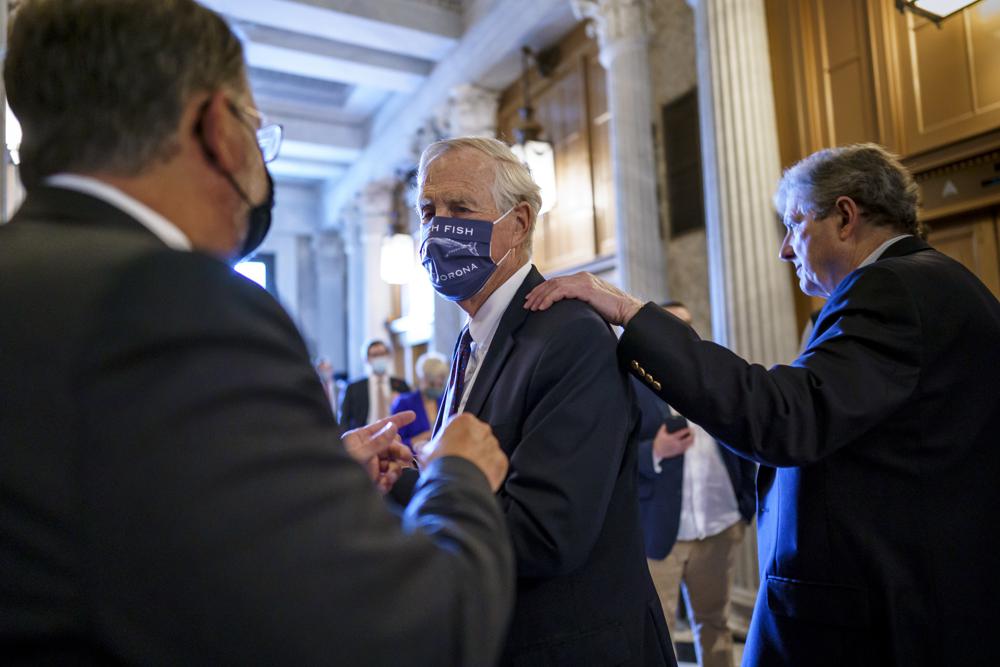
The vote on a $1 trillion bipartisan infrastructure package could be held “in a matter of days,” Senate Democratic leader Chuck Schumer said Sunday. But first, senators still need to finish writing the vast legislation. Schumer opened the rare Sunday session by saying that the text of the bill would be released “imminently.” To be called the Infrastructure Investment and Jobs Act, it is swelling to 2,700 pages. But as glitches were caught and changes made, the start-and-stop day was turning into an evening Senate session. Two of the negotiators said Sunday morning that action could come soon. Sen. Susan Collins, R-Maine, said on CNN, “We really are just about finished.” Sen. Joe Manchin, D-W.Va., said on CNN that there will likely be “text today and by this evening, hopefully, we can start the process.” Like Schumer, both said the bill could be finished this week. Senators and staff have been laboring behind the scenes for days to write what is certain to be a massive piece of legislation and a key part of President Joe Biden’s agenda. It calls for $550 billion in new spending over five years above projected federal levels, which could be one of the more substantial expenditures on the nation’s roads, bridges, waterworks, broadband, and the electric grid in years. To prod the work along, Schumer is keeping senators in over the weekend to finish drafting the bill so that senators can begin offering amendments. But it has been a weekend of fits and starts as senators. “They need a little more time,” Schumer said late Saturday. “I’m prepared to give it to them.” Schumer warned Saturday that he was prepared to keep lawmakers in Washington for as long as it took to complete votes on both the bipartisan infrastructure plan as well as a budget blueprint that would allow the Senate to begin work later this year on a massive, $3.5 trillion social, health and environmental bill. ”The longer it takes to finish, the longer we will be here, but we’re going to get the job done,” he said. Sen. John Cornyn, R-Texas, predicted: “It’s going to be a grind.” Among the major investments in the bipartisan package are $110 billion for roads and bridges, $39 billion for public transit, and $66 billion for rail. There’s also $55 billion for water and wastewater infrastructure as well as billions for airports, ports, broadband internet, and electric vehicle charging stations. After negotiators rejected ideas to raise revenue from a new gas tax or other streams, the package is being financed from funding sources that might not pass muster with deficit hawks, including repurposing untapped COVID-19 relief aid and relying on projected future economic growth. But so far there bipartisan support from Republican and Democratic senators have pushed the process along. Schumer wants the voting to be wrapped up on both the bipartisan package and the $3.5 trillion blueprint to start on the bigger package before senators leave for the August recess. The outcome with the bipartisan effort will set the stage for the next debate over Biden’s much more ambitious $3.5 trillion package, a strictly partisan pursuit of far-reaching programs and services including child care, tax breaks, and health care that touch almost every corner of American life. Republicans strongly oppose that bill, which would require a simple majority, and may try to stop both. Final votes on that are not expected until fall. Last week, 17 GOP senators joined all Democrats in voting to start work on the bill. That support has largely been held, with Senate Minority Leader Mitch McConnell, R-Ky., voting yes in another procedural vote to nudge the process along. Whether the number of Republican senators willing to pass the bill grows or shrinks in the days ahead will determine if the president’s signature issue can make it across the finish line. Cornyn said he expects Schumer to allow all senators to have a chance to shape the bill and allow for amendments from members of both parties. “I hope we can now pump the brakes a little bit and take the time and care to evaluate the benefits and the cost of this legislation,” Cornyn said. As time dragged awaiting the bill, Sen. Mark Warner, D-Va., said Saturday that negotiators were finalizing the last few pieces. “There’s been some of the sense of, well, infrastructure, that shouldn’t be hard to do. If it wasn’t hard to do, why has it taken 30 years to get to this moment?” Warner said. Republished with the permission of the Associated Press.
‘We have a deal’: Joe Biden announces infrastructure agreement
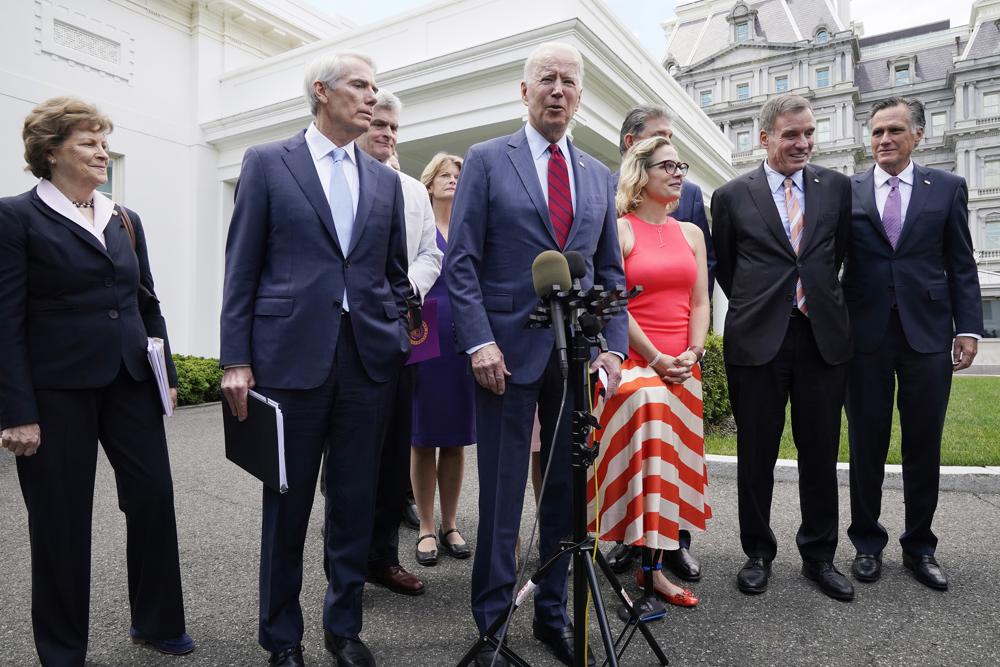
President Joe Biden announced on Thursday a hard-earned bipartisan agreement on a pared-down infrastructure plan that would make a start on his top legislative priority and validate his efforts to reach across the political aisle. He openly acknowledged that Democrats will likely have to tackle much of the rest on their own. The bill’s price tag at $973 billion over five years, or $1.2 trillion over eight years, is a scaled-back but still significant piece of Biden’s broader proposals. It includes more than a half-trillion dollars in new spending and could open the door to the president’s more sweeping $4 trillion proposals later on. “When we can find common ground, working across party lines, that is what I will seek to do,” said Biden, who deemed the deal “a true bipartisan effort, breaking the ice that too often has kept us frozen in place.” The president stressed that “neither side got everything they wanted in this deal; that’s what it means to compromise” and said that other White House priorities would be tackled separately in a congressional budget process known as reconciliation. He made clear that the two items would be done “in tandem” and that he would not sign the bipartisan deal without the other, bigger piece. Progressive members of Congress declared they would hold to the same approach. “This reminds me of the days when we used to get an awful lot done up in the United States Congress,” said Biden, a former Delaware senator, putting his hand on the shoulder of a stoic-looking Republican Sen. Rob Portman as the president made a surprise appearance with a bipartisan group of senators to announce the deal outside the White House. The deal was struck after months of partisan rancor that has consumed Washington while Biden has insisted that something could be done despite skepticism from many in his own party. Led by Republican Portman of Ohio and Democrat Kyrsten Sinema of Arizona, the group included some of the more independent lawmakers in the Senate, some known for bucking their parties. “You know there are many who say bipartisanship is dead in Washington,” said Sinema, “We can use bipartisanship to solve these challenges.” And Sen. Susan Collins, R-Maine, said, “It sends an important message to the world as well that America can function, can get things done.” The proposal includes both new and existing spending and highlights the struggle lawmakers faced in coming up with ways to pay for it. The investments include $109 billion on roads and highways, $15 billion on electric vehicle infrastructure and transit systems, and $65 billion toward broadband, among other expenditures on airports, drinking water systems, and resiliency efforts to tackle climate change. Rather than Biden’s proposed corporate tax hike that Republicans oppose or the gas tax increase that the president rejected, funds will be tapped from a range of sources — without a full tally yet, according to the White House document. Money will come from COVID-19 relief funds approved in 2020 but not yet spent, as well as untapped unemployment insurance funds that Democrats have been hesitant to poach. Other revenue is expected by going harder after tax cheats by beefing up Internal Revenue Service enforcement. The rest is a hodge-podge of asset sales and accounting tools, including funds coming from 5G telecommunication spectrum lease sales, strategic petroleum reserve, and an expectation that the sweeping investment will generate economic growth — what the White House calls the “macroeconomic impact of infrastructure investment.” The senators from both parties stressed that the deal will create jobs for the economy, a belief that clearly transcended the partisan interests and created a framework for the deal. “We’re going to keep working together–we’re not finished,” Sen. Mitt Romney said. “But America works, the Senate works.” For Biden, the deal was a welcome result. Though for far less than the approximately $2 trillion he originally sought, which is raising some ire on the left, Biden had bet his political capital that he could work with Republicans and showcase that “that American democracy can deliver” and be a counter-example to rising autocracies across the globe. Moreover, Biden and his aides believed that they needed a bipartisan deal on infrastructure to create a permission structure for more moderate Democrats — including Sinema and Joe Manchin of West Virginia — to then be willing to go for a party-line vote for the rest of the president’s agenda. There is still some skepticism on the left. Sen. Richard Blumenthal of Connecticut said the bipartisan agreement is “way too small –paltry, pathetic. I need a clear, ironclad assurance that there will be a really adequate robust package” that will follow the bipartisan agreement. House Speaker Nancy Pelosi, like Biden, warned that it must be paired with the president’s bigger goals now being prepared by Congress under a process that could push them through the Senate with only Democratic votes. “There ain’t going to be a bipartisan bill without a reconciliation bill,” Pelosi said. Portman had met privately ahead of the White House meeting with Senate Republican leader Mitch McConnell at the Capitol and said afterward that the Kentucky senator “remains open-minded and he’s listening still.” The announcement leaves unclear the fate of Biden’s promises of massive investment to slow climate change, which Biden this spring called “the existential crisis of our times.” Biden’s presidential campaign had helped win progressive backing with pledges of major spending on electric vehicles, charging stations, and research and funding for overhauling the U.S. economy to run on less oil, gas, and coal. The administration is expected to push for some of that in future legislation. But Sen. Bill Cassidy, R-La, stressed that there are billions of dollars for resiliency against extreme weather and the impacts of climate change and deemed Thursday’s deal a “beginning investment.” Biden has sought $1.7 trillion in his American Jobs Plan, part of nearly $4 trillion in broad infrastructure spending on roads, bridges, and broadband internet but also including the so-called care economy of child care centers,
Paid in full? Biden, GOP struggle over infrastructure costs
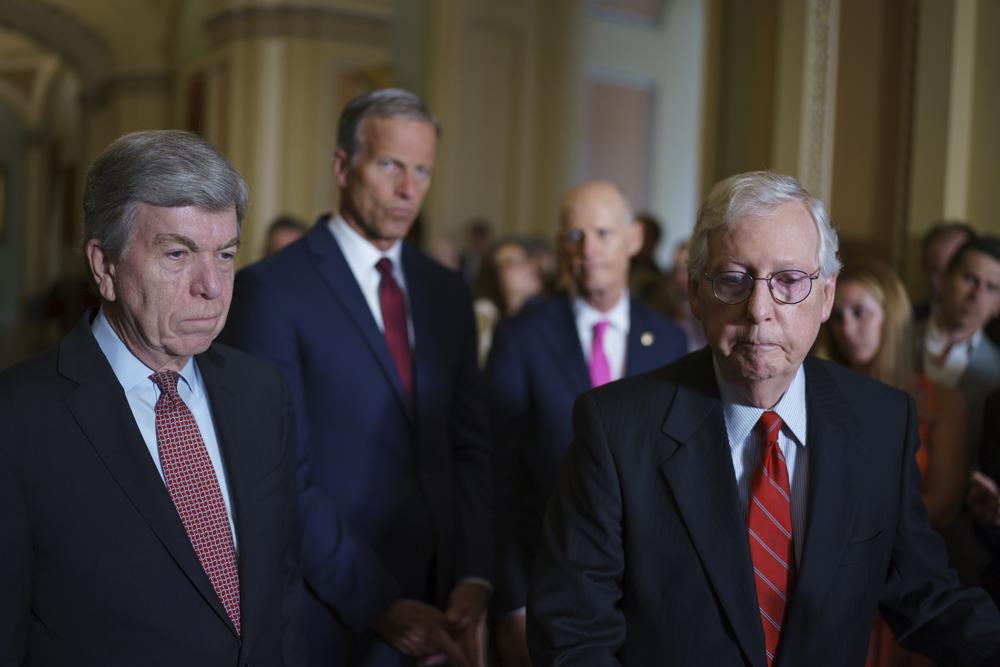
Congressional negotiators and the White House appear open to striking a roughly $1 trillion deal on infrastructure. But they are struggling with the hard part — how to pay for it. As President Joe Biden jumps back into the talks this week, the question of where the money will come from looms large. And time is running short to solve it. Biden wants to increase taxes for corporations and those households making more than $400,000 a year. Republicans have ruled that out, putting forward alternatives that Democrats find unacceptable. Both sides have said the infrastructure spending should be paid for and not add to the national debt. It’s a long-standing challenge with no easy solution, one that puts the bipartisan agreement around infrastructure in tension with the nettlesome realities of governing. It’s a problem that has thwarted previous attempts at an infrastructure bill, including during the Trump administration, and their ability to solve it now is likely to determine whether a bipartisan accord is possible. Senate Republican leader Mitch McConnell has said user fees are the way to go. But the White House and key Democratic lawmakers oppose increasing the user fee that has traditionally funded road and bridge construction, the federal gas tax, even if the increase is just allowing it to rise at the rate of inflation from its current level of 18.4 cents per gallon. The federal gas tax has not increased since 1993. “The president’s pledge was not to raise taxes on Americans making less than $400,000 a year, and the proposed gas tax or vehicle mileage tax would do exactly that,” said White House press secretary Jen Psaki. “So that is a nonstarter for him. I’d also note for the mathematicians in the room that only raises $40 billion, which is a fraction of what this proposal would cost.” Biden hosted two key Democratic senators, Joe Manchin of West Virginia and Kyrsten Sinema of Arizona, at the White House on Monday. He told them he was encouraged by the plans that were taking shape but still had questions about the policy and the financing for the proposal, a White House official said. Biden also said he was focused on budget resolution discussions. The two senators were among a group huddling late Monday at the Capitol, some emerging upbeat that a bipartisan deal was within reach. “Significant progress,” said Sen. Susan Collins, R-Maine. Sen. Jon Tester, D-Mont., said they were “very close” to having a full proposal from the bipartisan group as soon as Tuesday. One idea under consideration is reallocating money already approved as part of COVID-19 relief measures. Sen. Rob Portman, R-Ohio, said Sunday that they’re looking at repurposing more than $100 billion from COVID-19 relief to help pay for infrastructure. He put the onus on the White House to put forward other ideas since Democrats are balking at indexing the gas tax to inflation or creating a user fee for electric vehicles. “The administration, therefore, will need to come forward with some other ideas without raising taxes,” Portman said on NBC’s “Meet the Press.” “What we don’t want to do is hurt the economy right now as we’re coming out of this pandemic by raising taxes on working families.” With the gas tax likely out, other ideas include raising revenue from communication spectrum leases, and both parties are eyeing funds that could be raised by going after tax dodgers. The Republicans estimate about $63 billion could be raised by beefing up enforcement by the Internal Revenue Service. Democrats say the amount could be even higher. Another complication in the negotiations is that many Democrats question whether the size and scope of the infrastructure package being discussed by the White House and senators is adequate. Within the $1 trillion package, about $579 billion would be new spending, and the remainder would be a continuation of existing programs. Many Democrats are wary of a repeat of 2009 when Barack Obama was president, and they spent months negotiating the details of the Affordable Care Act with Republicans. Eventually, Democrats passed the package that became known as “Obamacare” on their own. “The amount of money that they are proposing is about one-quarter of what the president talked about in terms of new money. That’s not adequate,” said Sen. Bernie Sanders, I-Vt., on CNN’s “State of the Union.” Lawmakers are also hoping to influence more than the price tag of the infrastructure bill. One senator key to the talks, Manchin, unveiled his own draft proposal Monday for green energy infrastructure investments. The 423-page bill contains a wish list of energy-related proposals, and he’ll hold a hearing on the plan Thursday in the Senate Energy and Natural Resources Committee. Senate Majority Leader Chuck Schumer, D-N.Y., has described the infrastructure bill being negotiated as a good start. But he says most Democrats don’t believe it does enough on climate and also want it to address priorities like paid family leave. He is pushing a “two-track” approach that leaves open the possibility of a far larger bill without Republican votes. Using a special budget, the second infrastructure bill would only take a simple majority of 51 votes to pass. Such a measure could include more of the priorities laid out by Biden as part of his $1.8 trillion American Families Plan, such as paid family leave and universal pre-K for 3- and 4-year-olds. Sen. Lindsey Graham, R-S.C., warned the administration not to go that route. “I would just say to President Biden, you’ve got a party that’s divided. You’ve got a Republican Party that’s willing to meet you in the middle for a trillion dollars of infrastructure that could fundamentally change the way America does business in roads, ports, and bridges and accelerate electrical vehicles,” Graham said on “Fox News Sunday.” “You’ve got to decide what kind of president you are and what kind of presidency you want.” Republished with the permission of the Associated Press.


